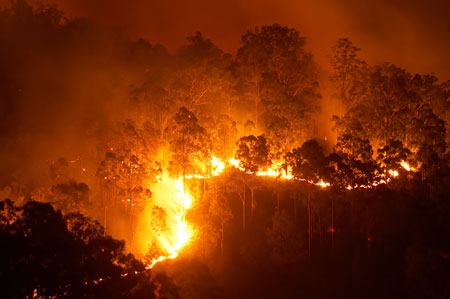
While Australia has been enduring a wet La Niña weather pattern for some time, there are predictions that this year it will switch to El Niño - characterised by lower than average rainfall, higher and extreme temperatures and higher fire danger.
Some of our most severe bushfire events have occurred during the El Niño cycle. The Ash Wednesday fires in 1983 ($2.46bn) and the major bushfires including in Canberra (year?) and the Black Saturday Bushfires in Victoria (2010), and the 2019 bushfires in NSW, Queensland, Victoria and South Australia ($2.32bn) took place during these periods.
Large parts of Australia are set to swelter through another heatwave in the coming weeks and months with hot weather warnings in place across the country. The Bureau of Metrology (BOM) is forecasting heatwaves around Australia, with warnings already in place in New South Wales, Victoria, Queensland, Western Australia, South Australia and Tasmania.
El Niño creates:
- Reduced rainfall
- Warmer temperatures with shift in temperature extremes
- Increased frost risk
- Later monsoon onset
- Increased fire danger especially around southeast Australia
- Decreased alpine snow depths
Although most major Australian droughts have been associated with El Niño, analysis of past El Niño events shows that widespread drought does not occur with every event, and the strength of an El Niño is not directly proportional to the rainfall impacts.
DSH Insurance advice
It is important for our policyholders to understand how their insurance cover could respond in the event of weather events caused by El Nino, such as bushfires. Maintaining your property is your first line of defence against extreme weather conditions. It’s easy to think you have insurance but most of us don’t undertake regular reviews. Check to make sure your home building insurance and any other insurances are up to date, whether you’re adequately covered, and whether you need to include any extra cover. It’s also important to read your policy documents and relevant Product Disclosure Statements so you are aware of exactly what you are covered for. Consider whether you are in a position to invest in resilience measures, we can always adjust your policy and the premium to reflect this investment.